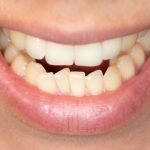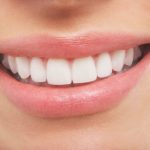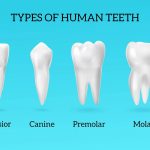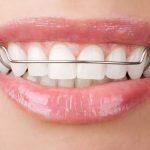Buck Teeth Explained: Causes, Symptoms and Treatment Options
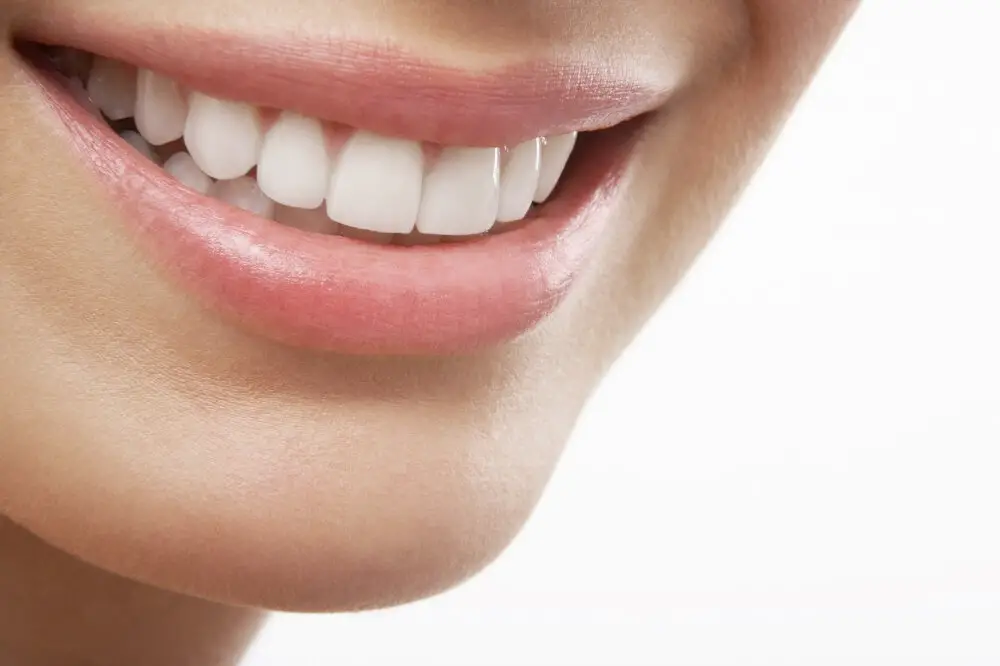
Buck teeth, also known as malocclusion, is a common dental condition that affects many people around the world. It’s a condition where the upper front teeth protrude forward, creating an overbite. While some people may consider it a cosmetic concern, buck teeth can also lead to various dental problems if left untreated. Understanding the causes, symptoms, and treatment options for buck teeth is essential to help prevent any long-term dental issues. A variety of factors can cause buck teeth, including genetics, thumb-sucking, tongue thrusting, and prolonged use of pacifiers or bottles during childhood. In some cases, buck teeth can also result from an abnormal jaw growth or a misaligned bite. Individuals with buck teeth may experience a range of symptoms, including difficulty biting and chewing, speech difficulties, and increased risk of tooth decay and gum disease. Fortunately, there are several treatment options available that can help correct buck teeth, such as braces, aligners, and surgery, depending on the severity of the condition.
Buck teeth, also known as malocclusion, is a condition where the upper front teeth protrude forward and do not align properly with the lower teeth. This can result in an overbite, which can cause difficulty with chewing, speaking, and even breathing. Buck teeth can be caused by a variety of factors, including genetics, thumb-sucking or pacifier use in childhood, and improper tongue placement. Symptoms of buck teeth include a visibly protruding upper jaw, crowded or crooked teeth, and difficulty closing the mouth properly. Treatment options for buck teeth include orthodontic braces or aligners, jaw surgery, and in severe cases, removal of teeth. Early intervention can help prevent more serious dental problems later in life.
Buck teeth, also known as an overbite or malocclusion, can affect a person’s self-esteem and confidence. In addition to the aesthetic concerns, they can also cause functional problems, such as difficulty chewing and speaking. Left untreated, buck teeth can lead to other dental issues, such as tooth decay and gum disease, due to the difficulty of properly cleaning teeth that are misaligned. It is important to address buck teeth through orthodontic treatment, which can improve both the appearance and function of the teeth, leading to better oral health and an overall improved quality of life.
Causes of Buck Teeth

Buck teeth, also known as malocclusion, is a dental condition where the upper front teeth protrude forward beyond the lower teeth. This condition can be caused by a variety of factors, including genetics, childhood habits, and dental injuries. One of the most common causes of buck teeth is genetics, where a person may inherit a smaller jaw or larger teeth from their parents, leading to overcrowding and misalignment of the teeth. Additionally, childhood habits such as thumb sucking, using pacifiers, or tongue thrusting can cause buck teeth by putting pressure on the front teeth and shifting them forward. Dental injuries such as accidents or trauma to the face can also cause buck teeth by damaging the teeth or jawbone, leading to misalignment and protrusion. Symptoms of buck teeth can vary from mild to severe, depending on the extent of the misalignment. Common symptoms include difficulty biting and chewing, speech impediments, and self-consciousness about the appearance of the teeth. In severe cases, buck teeth can also lead to jaw pain, headaches, and temporomandibular joint disorders. Treatment options for buck teeth depend on the severity of the condition and may include orthodontic treatment such as braces or Invisalign, dental restorations such as veneers or crowns, or surgery in extreme cases. Early intervention and treatment can help prevent complications and improve the overall oral health and appearance of a person’s smile.
Genetics plays a crucial role in the development of buck teeth. This condition is often hereditary, meaning it can be passed down from parents to their children. A person’s genes can determine the size and shape of their jaw, which can affect how their teeth come in. In some cases, a person’s jaw may be too small to accommodate all of their teeth, causing them to become crowded and crooked. Other genetic factors can also contribute to the development of buck teeth, such as an overbite or underbite. While genetics cannot be changed, there are options for treating buck teeth, including orthodontic braces, clear aligners, or even surgery in severe cases.
Thumb sucking is a common habit among children that involves placing the thumb inside the mouth and sucking on it. This behavior may provide comfort and security for young children, but if it persists beyond the age of 4 or 5, it can lead to dental problems such as buck teeth. The constant pressure of the thumb against the front teeth can cause them to shift forward, resulting in an overbite or open bite. In some cases, thumb sucking may also lead to speech problems or difficulties with proper jaw growth. Treatment options for thumb sucking include positive reinforcement, reminders, and the use of devices such as thumb guards or bitter-tasting nail polish. It is important to address this habit early on to prevent potential dental and speech issues.
Tongue thrusting, also known as orofacial muscular imbalance, is a common cause of buck teeth. It occurs when the tongue pushes forward against the teeth while swallowing, speaking, or at rest. This puts pressure on the front teeth, causing them to shift forward and create an overbite or gap. Tongue thrusting can also lead to speech difficulties, such as lisping or difficulty pronouncing certain sounds. Treatment options for tongue thrusting include speech therapy, orthodontic treatment with braces or aligners, and myofunctional therapy to retrain the tongue and mouth muscles. Early intervention is crucial to prevent long-term effects on dental and speech development.
Mouth breathing, which is the act of breathing through the mouth instead of the nose, is a common problem that can lead to buck teeth. When someone breathes through their mouth, they may develop an open bite, which is a gap between the upper and lower teeth when the mouth is closed. This occurs because the tongue is not in the correct position to support the teeth and jaw. Mouth breathing can also dry out the mouth, which can lead to tooth decay and gum disease. In addition to causing dental problems, mouth breathing can also affect overall health by disrupting sleep and causing fatigue, headaches, and a sore throat. Therefore, it is important to address mouth breathing early on to prevent any dental or health issues from arising.
Improper dental care is one of the leading causes of buck teeth. When individuals fail to take care of their teeth, they may develop conditions such as tooth decay, gum disease, and other dental problems that can lead to misaligned teeth. Poor oral hygiene habits, such as irregular brushing and flossing, can also contribute to the development of buck teeth. Additionally, certain lifestyle factors, such as a diet high in sugary or acidic foods, can increase the risk of dental issues that can ultimately lead to buck teeth. It is crucial to maintain proper dental care by practicing good oral hygiene habits and visiting a dentist regularly to prevent the development of buck teeth and other dental problems.
Symptoms of Buck Teeth
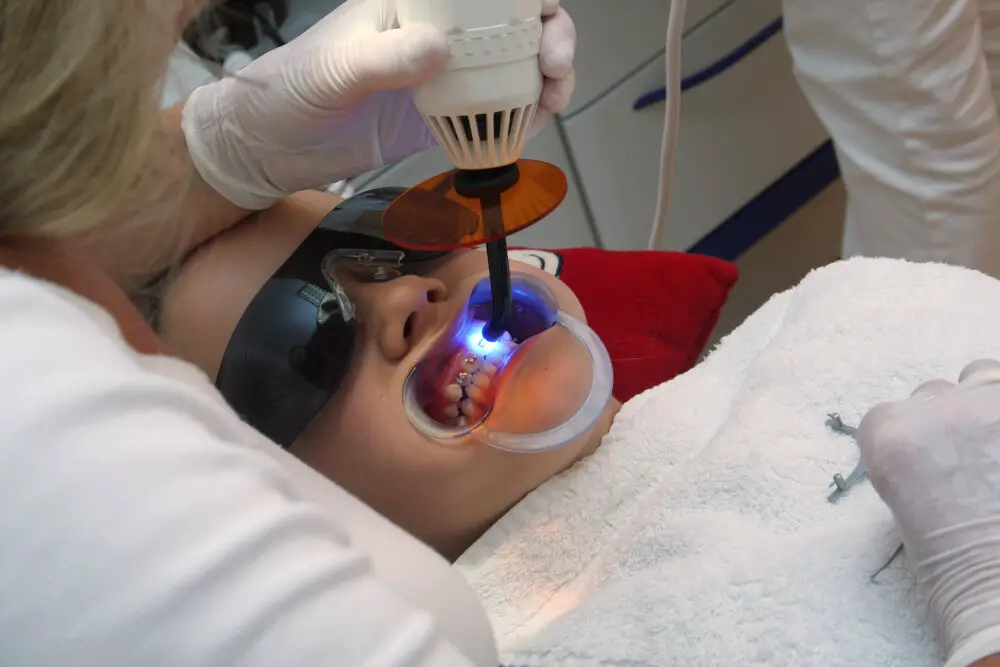
Buck teeth, also known as malocclusion, is a dental condition that occurs when the upper front teeth protrude outwards, creating an overbite. This condition can occur due to a variety of reasons such as genetics, thumb sucking, tongue thrusting, and prolonged use of pacifiers. Buck teeth can cause several symptoms, including speech difficulties, difficulty biting and chewing food, and increased risk of dental trauma. One of the most common symptoms of buck teeth is difficulty in speech. Due to the protrusion of teeth, it becomes challenging to pronounce certain words and sounds. This can lead to a lack of confidence and self-esteem issues, especially in children. Buck teeth can also cause difficulty in biting and chewing food, leading to digestive problems and malnutrition. Additionally, the protruding teeth put extra pressure on the gums and the jaw, leading to increased risk of dental trauma, such as chipping or cracking of teeth, or injuries to the soft tissues in the mouth. If left untreated, buck teeth can also cause the misalignment of other teeth, leading to further dental complications.
Protruding front teeth, also known as buck teeth, can be caused by a variety of factors including genetics, thumb-sucking, tongue-thrusting, and prolonged pacifier use. Buck teeth can not only affect the appearance of the teeth but can also lead to functional problems such as difficulty biting and chewing. Treatment options for buck teeth include orthodontic treatment such as braces or clear aligners, as well as jaw surgery in severe cases. Early intervention can prevent the need for more extensive treatment later in life, so it is important to have regular dental check-ups and address any concerns with your dentist or orthodontist.
Overbite, also known as malocclusion, occurs when the upper teeth overlap the lower teeth significantly. This condition is common and can be caused by a variety of factors, including genetics, thumb-sucking, and tongue thrusting. Overbite can lead to a variety of dental problems, such as gum disease, tooth decay, and jaw pain. In severe cases, it can also cause speech problems and difficulty chewing. Treatment options for overbite include braces, headgear, and surgery, depending on the severity of the condition. Seeking professional dental care can help prevent and treat overbite, improving overall dental health and quality of life.
Crowded teeth, also known as malocclusion, occur when there is not enough space in the mouth for all of the teeth to fit properly. This can cause teeth to overlap, twist, or even become impacted, leading to a less-than-perfect smile. Crowded teeth can be caused by a variety of factors, including genetics, thumb-sucking, and poor oral hygiene. Symptoms of crowded teeth may include difficulty biting or chewing, speech problems, and discomfort or pain in the jaw. Treatment options for crowded teeth may include braces, retainers, or, in severe cases, surgery. It is important to address crowded teeth early on to prevent further dental problems down the line.
Jaw pain or discomfort can be a common symptom of buck teeth, a dental condition where the upper front teeth protrude significantly beyond the lower front teeth. This misalignment can cause various issues, including difficulty in biting and chewing, speech problems, and even social anxiety. The pressure from the upper teeth can also lead to discomfort and pain in the jaw, neck, and head. In severe cases, it can also result in temporomandibular joint disorder (TMD), causing chronic jaw pain and limited movement. Therefore, seeking orthodontic treatment for buck teeth is crucial not only for aesthetic purposes but also for improving oral health and overall well-being.
Difficulty chewing or speaking is a common issue faced by individuals with buck teeth. Buck teeth, also known as malocclusion, occur when the upper front teeth protrude beyond the lower teeth, creating a gap between them. This misalignment can cause difficulty in chewing, as the teeth may not meet properly, making it challenging to break down food. Additionally, the protruding teeth can interfere with the tongue’s movement, making it difficult to speak clearly. Individuals with buck teeth may also experience discomfort or pain in the jaw due to the misalignment. Treatment options for buck teeth include braces, clear aligners, and in severe cases, surgery. Seeking treatment for buck teeth can not only improve functionality but also boost self-confidence and overall oral health.
Treatment Options for Buck Teeth

When it comes to buck teeth, there are several treatment options available depending on the severity of the condition. Mild cases may only require cosmetic treatment, such as dental veneers or teeth whitening, to improve the appearance of the teeth. However, for more severe cases, orthodontic treatment may be necessary. This can include braces, clear aligners, or other orthodontic appliances to gradually straighten the teeth and correct the bite. In some cases, orthodontic treatment may also involve the use of headgear or other devices to help reposition the jaw. Surgery may be necessary in rare cases where the condition is particularly severe or if there are underlying structural issues causing the buck teeth. Regardless of the treatment option chosen, it is important to address buck teeth as soon as possible to avoid more serious dental problems down the road. Buck teeth can make it difficult to properly clean the teeth and gums, increasing the risk of tooth decay, gum disease, and other oral health problems. Additionally, the condition can lead to problems with biting, chewing, and speaking, as well as self-esteem issues related to the appearance of the teeth. With the right treatment, however, it is possible to correct buck teeth and achieve a healthy, beautiful smile.
Braces are a common treatment option for buck teeth, a condition where the upper front teeth protrude outwards. Braces work by applying gentle pressure to the teeth and gradually moving them into the correct position. They consist of brackets that are attached to the teeth and connected by wires. The wires are tightened over time to adjust the position of the teeth. Braces can be made of metal or clear materials, depending on the patient’s preference. They are typically worn for a period of 1-3 years and require regular adjustments by an orthodontist. While braces can be uncomfortable at first, they can be a highly effective treatment option for correcting buck teeth and improving overall oral health.
Invisalign is a popular orthodontic treatment option for correcting misaligned teeth, including buck teeth. It involves the use of custom-made clear plastic aligners that gradually shift teeth into the desired position. Invisalign aligners are removable, making it easier to clean teeth and maintain good oral hygiene. They are also virtually invisible, making them a popular choice for adults who may feel self-conscious about wearing traditional braces. Invisalign treatment typically takes between 12 and 18 months, depending on the severity of the misalignment. It is important to consult with an orthodontist to determine if Invisalign is the best treatment option for buck teeth or any other orthodontic issue.
Orthodontic headgear is a type of orthodontic appliance that is used to correct malocclusions, including buck teeth. It consists of a wire framework that is attached to the patient’s teeth, and a strap that goes around the back of their head. The headgear applies gentle pressure to the teeth and jaws, gradually moving them into the correct position. Orthodontic headgear is typically worn for a few hours each day or overnight, depending on the severity of the malocclusion. While it may take some time to get used to wearing headgear, it can be a highly effective treatment option for correcting buck teeth and other types of malocclusions.
Tooth extraction is a dental procedure that involves removing a tooth from its socket in the jawbone. This can be necessary for a variety of reasons, including severe decay, infection, overcrowding, or damage. While tooth extraction can be a daunting prospect, modern techniques and anesthesia make the process relatively painless and straightforward. Following the procedure, patients may experience some discomfort, swelling, and bleeding, but these symptoms can typically be managed with over-the-counter pain relievers and proper care. Depending on the reason for the extraction, patients may also require follow-up treatments such as dental implants or bridges to restore their smile and prevent additional dental problems.
In some cases, surgery may be recommended as a treatment option for buck teeth. This is typically reserved for severe cases where other treatments have not been effective. Surgery may involve removing teeth, reshaping the jawbone, or a combination of both. The goal of surgery is to improve the alignment of the teeth and jaw, resulting in a more balanced and functional bite. However, surgery is not without risks and should only be considered after a thorough evaluation by an experienced orthodontist or oral surgeon. It is important to weigh the potential benefits and risks before deciding to undergo any surgical procedure.
Prevention of Buck Teeth
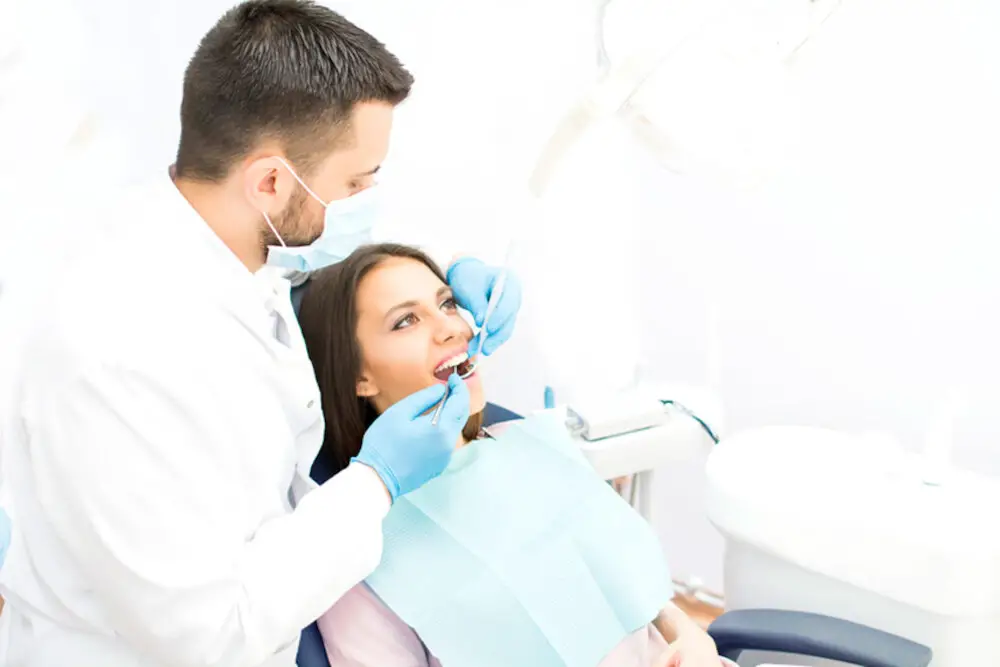
Buck teeth are a common dental condition where the upper front teeth protrude further than the lower front teeth, giving the appearance of a rabbit-like overbite. While it may be a genetic trait, there are several other factors that can contribute to the development of buck teeth. Prevention of buck teeth starts with proper oral hygiene habits. Brushing twice a day and flossing daily can help prevent tooth decay and gum disease, which can lead to crooked teeth. Another way to prevent buck teeth is to avoid habits that can cause misalignment of the teeth. Thumb-sucking, extended pacifier use, and tongue thrusting are common causes of buck teeth in young children. Parents should encourage their children to stop these habits as soon as possible to prevent buck teeth from developing. In addition, wearing a mouthguard while playing sports can help protect the teeth from injury, which can also cause misalignment. Early detection of buck teeth is crucial in preventing more severe dental problems later on. Regular dental check-ups and early orthodontic intervention can help correct misaligned teeth before they become more severe. By following these prevention tips, you can help keep your teeth healthy and straight, preventing the need for more extensive dental treatment in the future.
Proper dental care is essential in preventing and treating buck teeth. This includes regular brushing and flossing to remove plaque and food particles that can lead to tooth decay and gum disease. In addition, wearing proper protective gear during sports or activities that could result in dental trauma can prevent damage to the teeth. Maintaining a healthy diet, limiting sugary and acidic foods and drinks, and avoiding habits such as nail biting and teeth grinding can also promote good dental health. Regular dental check-ups and cleanings with a qualified dentist can identify and address any dental issues before they become more serious. By adopting these habits, individuals can help ensure the health and alignment of their teeth and reduce the risk of developing buck teeth.
Thumb sucking and tongue thrusting are common habits that can contribute to the development of buck teeth. These habits can cause the teeth to shift forward and the upper jaw to narrow, resulting in a protruding appearance of the front teeth. To avoid these habits, parents should encourage their children to stop thumb sucking or pacifier use after the age of two, and seek help from a pediatric dentist or orthodontist if the habit persists. Additionally, tongue thrusting can be addressed with speech therapy or myofunctional therapy to help retrain the muscles in the mouth and prevent further damage to the teeth and jaw. By addressing these habits early on, individuals can prevent the development of buck teeth and maintain a healthy, functional smile.
Mouth breathing is a common issue, particularly in children, and can contribute to the development of buck teeth. Addressing mouth breathing can be done through a variety of methods, including the use of nasal strips, chin straps, and special mouth guards. In addition, speech therapy and orthodontic treatment may be recommended to help correct the underlying causes of mouth breathing and prevent the development of buck teeth. It is important to address mouth breathing early on, as it can lead to a variety of health issues, including dry mouth, bad breath, and tooth decay. By working with a qualified healthcare professional, individuals can improve their breathing and oral health, and prevent the development of buck teeth.
Early orthodontic evaluation is essential for identifying and addressing dental issues before they become more severe. Buck teeth, also known as overbite, is one such issue that can be corrected with early intervention. Children should have their first orthodontic evaluation by the age of 7, as this is when their adult teeth begin to emerge. During this evaluation, the orthodontist can identify any abnormalities in the child’s dental development and create a treatment plan. Early orthodontic intervention can prevent the need for more invasive and costly procedures later in life. Therefore, parents should prioritize their child’s dental health and seek early evaluation to ensure their child’s teeth are developing correctly.
Buck teeth, also known as overjet, is a condition where the upper front teeth protrude forward beyond the lower teeth. This condition can be caused by a variety of factors, including genetics, thumb sucking, tongue thrusting, and prolonged use of pacifiers or bottles. Symptoms of buck teeth include difficulty biting or chewing, speech difficulties, and self-consciousness about the appearance of the teeth. Treatment options for buck teeth include orthodontic treatment, such as braces or clear aligners, to gradually move the teeth into proper alignment. In severe cases, surgery may be necessary to correct the alignment of the jaw. It is important to seek treatment for buck teeth to avoid potential dental health issues and to improve overall oral health and appearance.
It is essential to seek treatment for buck teeth to prevent potential dental problems in the future. Buck teeth, also known as overbite, can cause several symptoms, including difficulty chewing, speech problems, and even jaw pain. Moreover, misaligned teeth can lead to tooth decay and gum disease, as it can be challenging to clean the teeth adequately. Seeking treatment for buck teeth can improve both the appearance and functionality of the teeth, leading to a boost in self-confidence and overall well-being. Treatment options for buck teeth range from braces to surgery, depending on the severity of the condition, and consulting with a dental professional is the best way to determine the most effective solution.
It’s important to prioritize dental health, not just for aesthetic reasons but for overall health as well. Neglecting dental health can lead to various oral diseases and even affect other parts of the body. One common dental issue is buck teeth, which can affect self-confidence and cause discomfort while eating or speaking. However, there are various treatment options available, depending on the severity of the condition. Regular dental check-ups and maintaining good oral hygiene habits can prevent or minimize the development of buck teeth and other dental problems. Don’t postpone taking care of your dental health – it’s crucial for a healthy and happy life.
Conclusion

In conclusion, buck teeth can be caused by a variety of factors and can be accompanied by various symptoms, including difficulty chewing and speaking. However, with the help of orthodontic treatment options such as braces, clear aligners, and jaw surgery, correcting buck teeth is achievable. It is essential to address the issue early on to avoid potential complications in the future. With proper treatment, individuals can regain their confidence, improve their oral health, and enjoy a beautiful smile.
